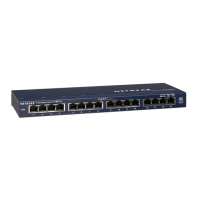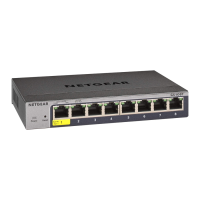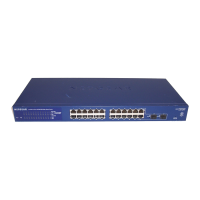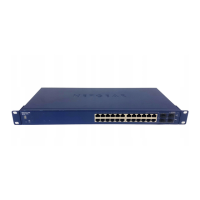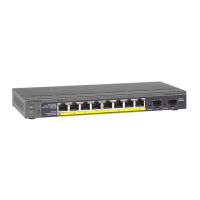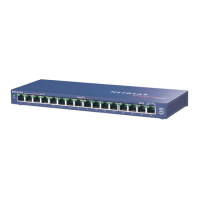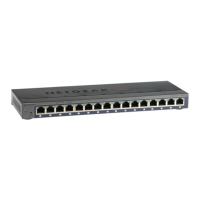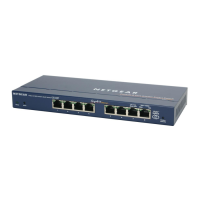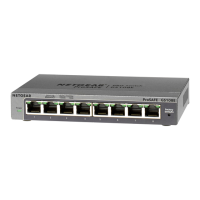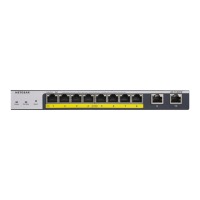
Do you have a question about the NETGEAR GS110TP - ProSafe Gigabit Smart Switch and is the answer not in the manual?
| PoE Ports | 8 |
|---|---|
| PoE Budget | 46W |
| Switching Capacity | 20 Gbps |
| Forwarding Rate | 14.8 Mpps |
| QoS | Yes |
| Power Supply | External power adapter |
| Humidity | 10% to 90% non-condensing |
| Ports | 8 x 10/100/1000 Mbps Gigabit Ethernet ports, 2 x Gigabit SFP ports |
| Jumbo Frame Support | 9216 bytes |
| VLAN Support | Yes |
| Management | Web-based |
| Security Features | 802.1x, ACL |
| Operating Temperature | 0°C to 40°C (32° to 104°F) |
| Storage Temperature | -20°C to 70°C |
An overview of starting the switch and accessing the user interface, including steps for using the Smart Control Center utility.
Details on the embedded web server and management software for monitoring and configuring switch functions via a web browser.
Steps to connect the switch to the network and configure network information (IP address, subnet mask, gateway) for remote management.
Instructions on how to access the switch management interface using a web browser and the login process.
Explanation of maintenance features like device discovery, network utilities, configuration upload/download, and firmware upgrades.
Procedure for upgrading the application software to take advantage of improvements and additional features.
Configuring network information for the management interface, including IP address, subnet mask, and default gateway.
Viewing and monitoring physical port information and configuring port settings like description, speed, duplex mode, and STP status.
Defining Virtual LAN groups, including VLAN IDs, names, and port membership for network segmentation and traffic control.
Configuring login password, RADIUS, TACACS+, and authentication lists for secure management access.
Procedures for changing the login password for the management interface, including password complexity requirements.
Enabling and configuring port access control using 802.1X authentication for devices connected to LAN ports.
Defining rules for traffic flow control, resource access, and network security using IPv4 and MAC ACLs.
Detailed statistical information about traffic handled by the switch, including packet counts, octets, and errors.
Options for rebooting the switch or resetting the system configuration to factory default values.
Tools for diagnosing network issues, including Ping and Traceroute utilities to test connectivity and identify network paths.
Overview of the switch's conformance to various network standards and protocols like TCP/IP, DHCP, and IEEE standards.
